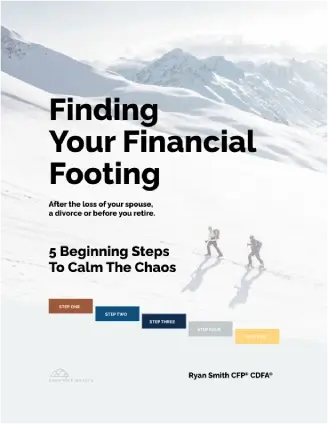Ready to break the chains and embrace financial freedom? Well then ladies, it’s time to take charge of your wealth. In this ultimate 101 Guide, you’ll be taken through the steps to achieving your financial independence.
Grab a pen and paper, pop on your thinking cap, and dive into the empowering world of personal finance! You’re going to get clear on what you’re working for, what stands in your way, and how you can make your dream life a reality.
What Does Financial Independence For Women Look Like?
Waking up every day without worrying about money – that’s financial independence! It’s what you do with that independence that will look different. That said, whether you want a fancy life in a big city or a minimalist one out in the country, your financial independence will depend on a few key things:
No Debt: Whether it’s student loans, credit cards, or personal loans, they’re gone for good. You’ve waved goodbye to monthly payments and kicked the stress to the curb.
Ample Savings: You’ve got ample savings. Enough to cover emergencies and then some. You’re not losing sleep when unexpected expenses come knocking.
Multiple Income Streams: Your money is working for you. You have investments that generate income without you breaking a sweat. You’re not dependent solely on a paycheck.
An Income That Lasts: Your nest egg is built to last. Work is entirely optional. You’re not at risk of outspending your income or outliving your savings.
What Challenges Do Women Face In Finding Financial Independence?
For women seeking financial independence, the road can be bumpy. There’s no sugar-coating it. But knowing the challenges ahead of time can help you prepare. Here’s what you may be up against:
Pay Gap: On average, women working all year and full-time make only 83.7% of what men make.1 This means saving and investing can take you longer.
Motherhood Challenges: Becoming a mother is a wonderful thing. But it doesn’t come without its challenges. Raising children can be incredibly expensive, and may require you to take a career break or opt for part-time work. A woman’s income can drop upwards of 30% after having a child.2 The financial burden of children can be especially trying for single mothers.
Financial Literacy: Studies have shown women tend to score lower on financial literacy tests compared to men.3 If you haven’t been exposed to personal financial education, have a hectic schedule, or have been excluded from personal finance discussions, it may be harder for you to confidently move forward.
Longer Life Expectancies: Women typically live 5 years longer than men.4 Longer life spans need more years of funding. This can make a significant difference when you’re planning for retirement.
What Are The Steps to Financial Independence For Women?
Below are six pivotal steps in securing financial independence as a woman. From safety nets to savvy investments, they’ve got you covered. But make sure to review them in order! Your financial freedom deserves best practices.
Step 1) Create Immediate Protections
Hold your money horses! Before you race toward freedom, let’s buckle your financial seatbelt. It’s essential for staying safe as you find your footing. Here’s how you set up your basic protections:
Establish a Buffer Fund: Stashing away a few thousand dollars is critical to start. It allows you to stabilize yourself. Make sure your money is in an immediately-accessible place. This is just an immediate protection. You’ll want to build up a more ample emergency fund later on (see step 3).
Start Educating Yourself: As mentioned above, women aren’t always fortunate enough to receive the same level of financial education. Take back control by investing in yourself. Use YouTube channels, books, or financial articles like this one to build a background of personal financial knowledge. Regard the process of education as one to develop your understanding to ask better questions as opposed to trying to become a DIY expert in the field.
We recommend the following:
- Attend a Financial Education Course: See if there is one offered through a local college or university that has a course outline and includes class books/materials. These often have some kind of small class fee to attend. This can help to avoid the “free steak dinner” presentations that can have strings attached.
- Don’t Beat Yourself Up: Be accepting of where you are with your current knowledge. Find a mood of wonder and ambition during this process and have fun with learning.
Step 2) Develop A Budget
Now that you’ve got your immediate protections, let’s talk strategy. A budget is your compass for financial freedom. It’ll keep you directionally correct as you move towards independence. A budget will help you:
Identify Your Living Expenses: You need to know how much your essentials cost each month. That’s things like your rent/mortgage, groceries, utilities, insurance, etc.
Clarify Your Spending Habits: Be courageously honest here. Where is your money really going? Are the TV subscriptions, coffee runs, and feel-good splurges providing enough value? If not, ditch ’em. You’ll immediately take back power.
Live On Less Than You Make: Ahhhh, the golden rule of financial independence! You can’t build yourself up if you keep digging a hole. Use your budget to live on less than you make.
Give Every Dollar A Purpose: Money disappears if you have no plan in place. Use your budget to put all your dollars to good use. Don’t worry, that will include (affordable) fun!
Pay Yourself First: Every payday, put money aside for yourself. Your financial future is a non-negotiable expense. Always allocate a portion of your budget towards savings.
Step 3) Create Long-Term Protections
You’ve protected yourself in the immediate. You’ve put a budget in place. Now it’s time to establish some solid long-term protections. These pillars of support will safeguard your financial health as you continue moving towards independence. Here’s what to focus on:
Get a Financial Thinking Partner: The right financial advisor is invaluable. They’re able to provide ample support with every step on this list. With a coach at your side, you’ll ensure each step is taken efficiently and securely. A great way to vet advisors is to learn how they continuously educate their clients. Everything related to the financial world is constantly subject to change. Communication between you and your advisor is key to your success.
Establish a Fully-Funded Emergency Fund: It’s time to upgrade that buffer fund. A fully-funded emergency fund should cover 3-6 months of your living expenses. Your budget will tell you the amount you need.
Put Needed Insurance in Place That You Can Afford: Insurance is essential. Consider your needs for health, life, home, and auto insurance to keep you and your loved ones safe. Your advisor can help determine your needs and price ranges.
Step 4) Develop A Long-Term Plan
With your long-term protections in place, you’re now in a position to take off. But where is it that you’re looking to land? There may be several key long-term questions to ask yourself. But these three pieces of criteria will help you as you work backward from your ideals:
Risk Tolerance: How do you feel about taking risks? It’s all about balancing your desire to grow with your ability to sleep at night.
Time Horizon: How much time do you have until retirement? How long does your nest egg need to last? Your time horizon will play a big factor in the risks you can afford to take and the investment strategies you implement with your advisor.
Desired Retirement Lifestyle: Dream big, just keep your approach pragmatic. How do you want to live when life becomes work-optional? This will help shape your savings targets and investment goals.
Find Your Footing As A Financially Independent Woman
If you’re a woman looking to achieve financial independence, but are having a hard time picturing your ideal future, check out our free guide, “Finding Your Financial Footing.”
This guide helps you dive into your internal world. You’ll uncover what’s important to you as well as the mental barriers blocking your way.
Step 5) Align Your Investments
Okay, the long-term plan is in place. Now it’s time to align your investments. This is a critical step in turning your long-term plan into reality. After all, your investments are the tools that actually build your financial freedom.
Working with a financial advisor is vital here. They’ll guide you in selecting investments that match your risk tolerance, time horizon, and desired lifestyle. They’ll also be your go-to resource for making sense of the complex and ever-changing financial world.
A financial thinking partner will also help you save big on taxes. They can help strategically optimize your portfolio for tax efficiency. This is especially important for a long-term plan. Taxes can seriously eat away at your returns over time.
Step 6) Stay Consistent, Review Progress, and Adapt When Necessary
Stay the course. If you work the previous steps, this will be a lot easier. You’ll have the necessary foundation to pay yourself first over, and over again. Over time, this consistency will become your financial best friend. Compound interest takes over, and your financial independence comes faster than ever.
But it’s not just about staying the course. It’s also knowing when to make adjustments. Regularly meet with your financial advisor to review your progress. This isn’t a sit-and-forget situation. Markets change, and so do your personal circumstances and goals.
Adaptation is key. If something in your plan isn’t working, or if your goals have changed, don’t be afraid to pivot. This is about your financial well-being. It’s okay to make changes to rediscover the best path for you.
The road to financial independence as a woman isn’t a straight line. It’s a path that often has turns and detours. But by staying consistent, tracking your progress, and adapting when necessary, you stay in control.
Snowpine Wealth Creates Financial Independence For Women
At Snowpine Wealth, we’ve been helping women reach financial independence for over 12 years. As a CFP® Professional, Ryan Smith serves as your financial thinking partner. Together, you’ll walk side-by-side as you work through the steps above.
If you would like us to help you create financial freedom for yourself, we offer a free consultation called the Financial Transition StrategyTM.
It’s designed to help you quiet the noise and create a clear path forward, as well as help you get to know us and see if we’d be a good fit to work together.
We’re always respectful, and there’s never any pressure.
Securities and advisory services offered through Commonwealth Financial Network®, Member FINRA/SIPC, a Registered Investment Advisor. Fixed insurance products and services not offered through Commonwealth Financial Network®.


